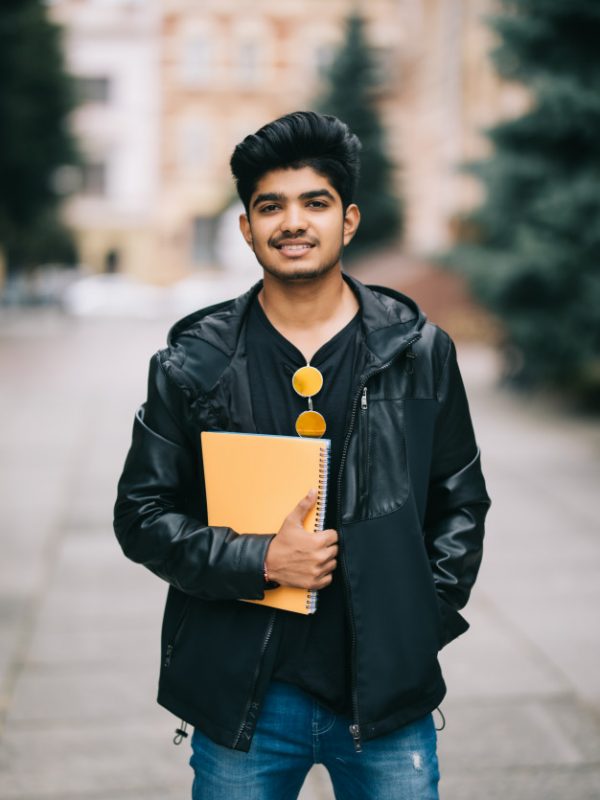USA
Your overseas Consultant
About the USA
The USA hosts the largest number of international students in the world
No surprise considering it’s home to some of the highest ranked universities, breathtaking landscapes and diverse cultures..
It’s got academic excellence, a flexible education structure with an excellent support system for students and a plethora of courses to choose from. And if that’s not reason enough, the vibrant campus life is bound to convince you. The USA is a melting pot, full of different ethnicities and cultures.
Giving you an exceptional global advantage, not to mention the myriad of job opportunities. Truth be told, there are few better places to experience a rich educational adventure.



Accomodation
Studies apart, stay is the second most important thing you’ll be spending on. And we’re here to make sure it’s worth every penny. There are 2 types of accommodation available:
- On-campus (hostels or dorms)
- Off-campus (PGs or apartments)
On-campus: A lot of universities make it mandatory for first-year students to pick on-campus housing. Campus housing applications are separate from the college admission form, which means they fill up quite fast and you have to apply in advance.
On-campus living has its perks – it’s closer to class, so you don’t have to wake up at 5 to catch a 7 am lecture. You don’t have to worry about buying groceries and cooking food. They come with 24×7 security and essential medical services. But it also means, you have to comply with dorm rules, curfew time, and deal with shared bathrooms.
Off-campus: It is widely known that living off-campus is far more affordable. Having said that, there are other factors that have to be looked at too. Taking care of utility bills, figuring transport to class, traveling in the night, safety and security, etc. However, you have the luxury of privacy and/or picking your roommate, private bathrooms, no dorm rules, and curfew time.
So take your time, go through all the pros and cons and pick something that aligns with your favoured choice and finances. Which is easier done and said with Vidyabroad.
Cost of Education
The USA is an expensive country for higher studies, no doubt.
The costs vary according to the type of programme, university, location, stay, visa etc. Community colleges are said to be more affordable than private universities. Generally, education and accommodation together on average, range from $25,000 to $50,000 each year. Having said that, Vidyabroad can help you apply for scholarships and educational loans to take some of the stress off yourself. Don’t forget to account for living expenses, transport, health support, and other miscellaneous expenses. Indian students in the USA are allowed to work 20 hours per week during academic sessions, and full-time during vacations. If you choose to earn as you learn, your income may be taxable. Creating a financial plan can be a daunting task, but let Vidyabroad change your mind about that.


Safety & Indian Community
For a long time, the West has been considered as the land of opportunities. Even more so today, given its attention to safety standards.
As we all know, education and progress are best achieved when they have a safe environment to do so. Almost all campuses in the USA have a special body to ensure the safety of their international students called the Safety Commission. Check with your institution and keep the security officer’s number saved in your phone. Various universities and colleges also offer services like shuttles and security escorts to drop you to your accommodation or stations after hours. CCTV cameras, 24×7 security and other safety measures ensure that you enjoy perhaps the most luxurious amenity – a good night’s sleep.
And as for feeling homesick, we’ve got two facts for you: The USA is the second most popular destination for Indians living abroad and Indian students represent the second largest international student population in the USA. You’ll find countless Indian associations to join and endless Indian restaurants who will happily feed you like your mother would have. And who knows, maybe your Diwali celebrations here might just beat the ones back home.
For emergencies, call the toll free number 911. This is a common number that can be used for fire, police or the ambulance.
Visa
Thanks to the pandemic (not), the travel and immigration rules are changing constantly.
With the amount of uncertainty in the air, Vidyabroad will ensure here’s one thing that’s not: your visa application.
The USA government offers 3 types of visas:
- F-1 student visa: to study at a USA college or university or to study English at an English language institute. Most students opt for this one
- J exchange visa: for participation in an exchange program, including high school and university study
- M student visa: for non-academic or vocational study or training in the US
As the first step, you must be accepted by a USA school or university that is certified by the Student and Exchange Visitor Program (SEVP). Once that’s done (congratulations!), you will receive a Form I-20 from the institution’s international student office, which is a paper record of your information in the database called the Student and Exchange Visitor Information System (SEVIS).
Step 1
SEVIS fee and I-20 form collection: Once you pay the SEVIS fee, you are given an I-20 form from your new school or college. Fill the form and bring it along for your F-1 visa interview.
Step 2
Visa fee and form collection: Pay your visa fee at the designated bank and collect the visa form. Fill the form and bring it along for your interview.
Step 3
Visa interview: Schedule a visa interview with the USA embassy in your country. The waiting time may vary depending on the visa type. Once you complete the interview successfully, you’ll receive your visa 120 days in advance.
As per the new rules, students need not carry letters from their schools stating that classes will be in person. The embassy has also mentioned that at this point of time they can’t expedite appointment dates for fall 2021 students. In case students find that their appointment date is affecting their start date, they must reach out to their respective schools to work out further options.
You’ll have to apply for your student visa application online using the US Embassy and Consulates website. You can apply up to 120 days before your intended date of the programme’s start date. Also remember that your application date is the date on which you pay your application fee.
To get your USA student visa, you’ll also have to provide evidence of proficiency in the English language. This means passing a secure English language test to be able to prove your communication and correspondence skills – usually The International English Language Testing System (IELTS). USA educational institutions require a minimum IELTS score of 6.5 band.

Essential documents required
When applying for your student visa for the US, you will need:
- A valid passport that is valid for at least 6 months beyond your period of stay in the USA (unless exempt by country specific agreements)
- Acceptance at a SEVP approved school and your Form I-20
- Application fee payment for the SEVIS
- Non-immigrant visa application and the Form DS-160 confirmation page
- Your photograph in the requested format, and number
- Academic preparation documents such as transcripts, diplomas, degrees or certificates
- Evidence that you have sufficient funds to maintain your living expenses throughout the period of your stay in the USA (bank statements, financial undertaking by a sponsor to cover your accommodation and living costs or a scholarship program)
- Evidence that you will leave the USA once you have completed your course of study
You may also have to appear for a personal interview at the US embassy or consulate. These are basic requirements, please speak with your Vidyabroad counsellor for a detailed list of documents required for your visa processing.
Benefits of a Student Visa
- F1 visa holders are eligible for up to 12 months of OPT (optional practical training) on completion of graduation. That means you can work for a year after you finish your studies
- It is a temporary employment permission allowing students the opportunity to gain practical experience in their field of study
- After that, you’ll be required to apply for a work visa if you have to continue working in the USA. You can remain in the USA for up to 60 days after the completion of your course even if you don’t have a job offer or haven’t applied for OPT


Most popular universities
- Stanford University
- Harvard University
- California Institute of Technology
- Massachusetts Institute of Technology
- University of California, Berkeley
- Yale University
- Princeton University
- University of Chicago
- Johns Hopkins University
- University of Pennsylvania
